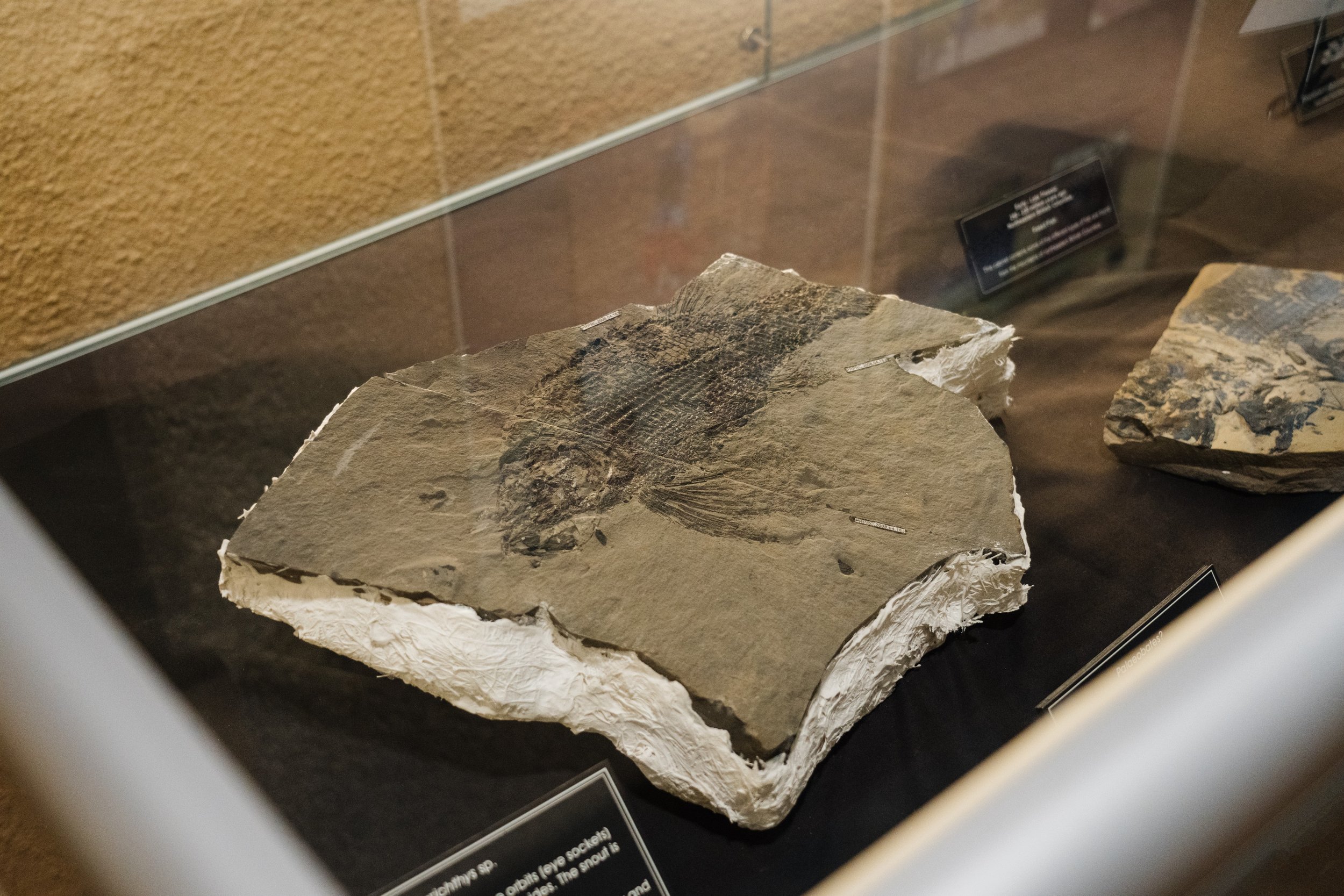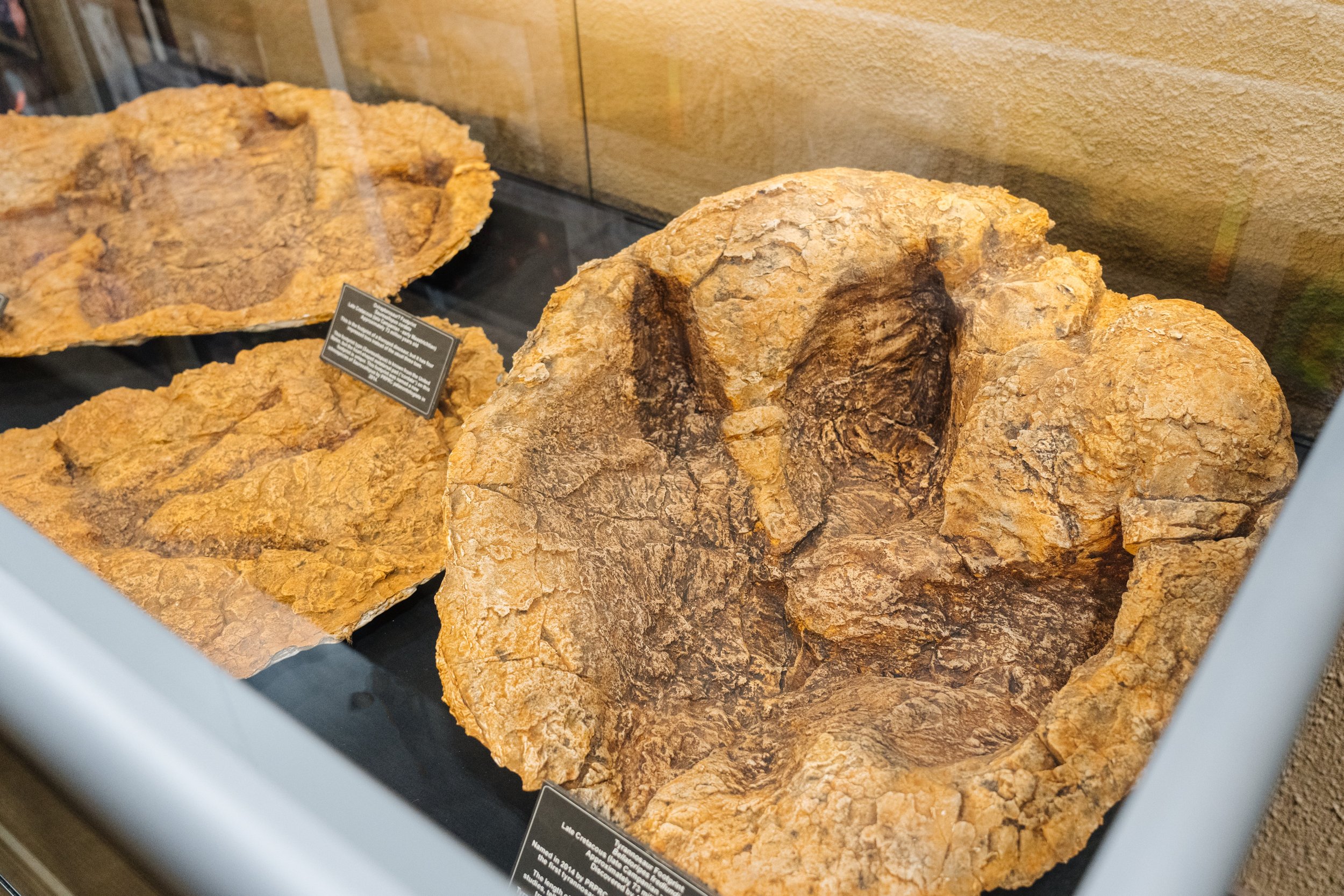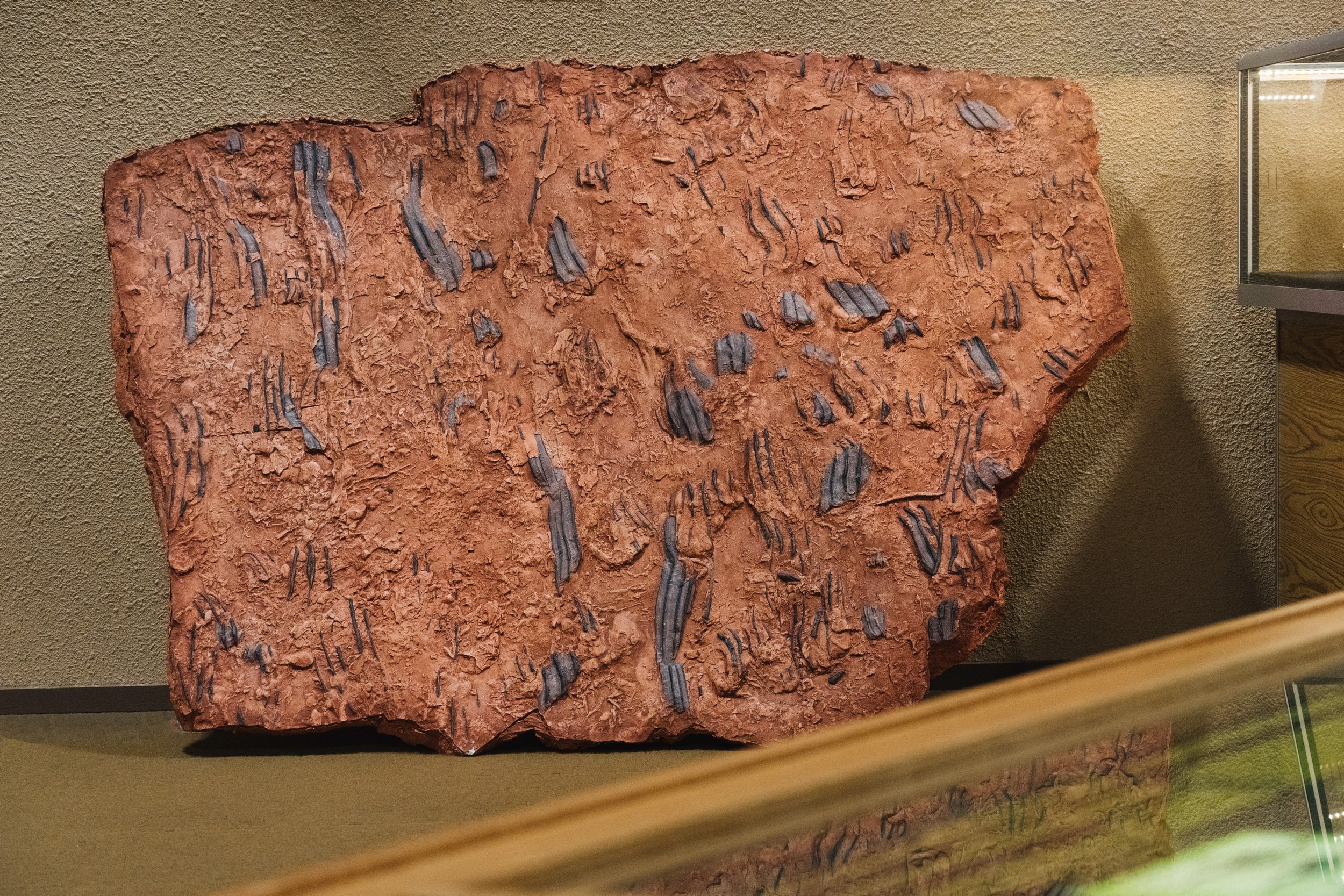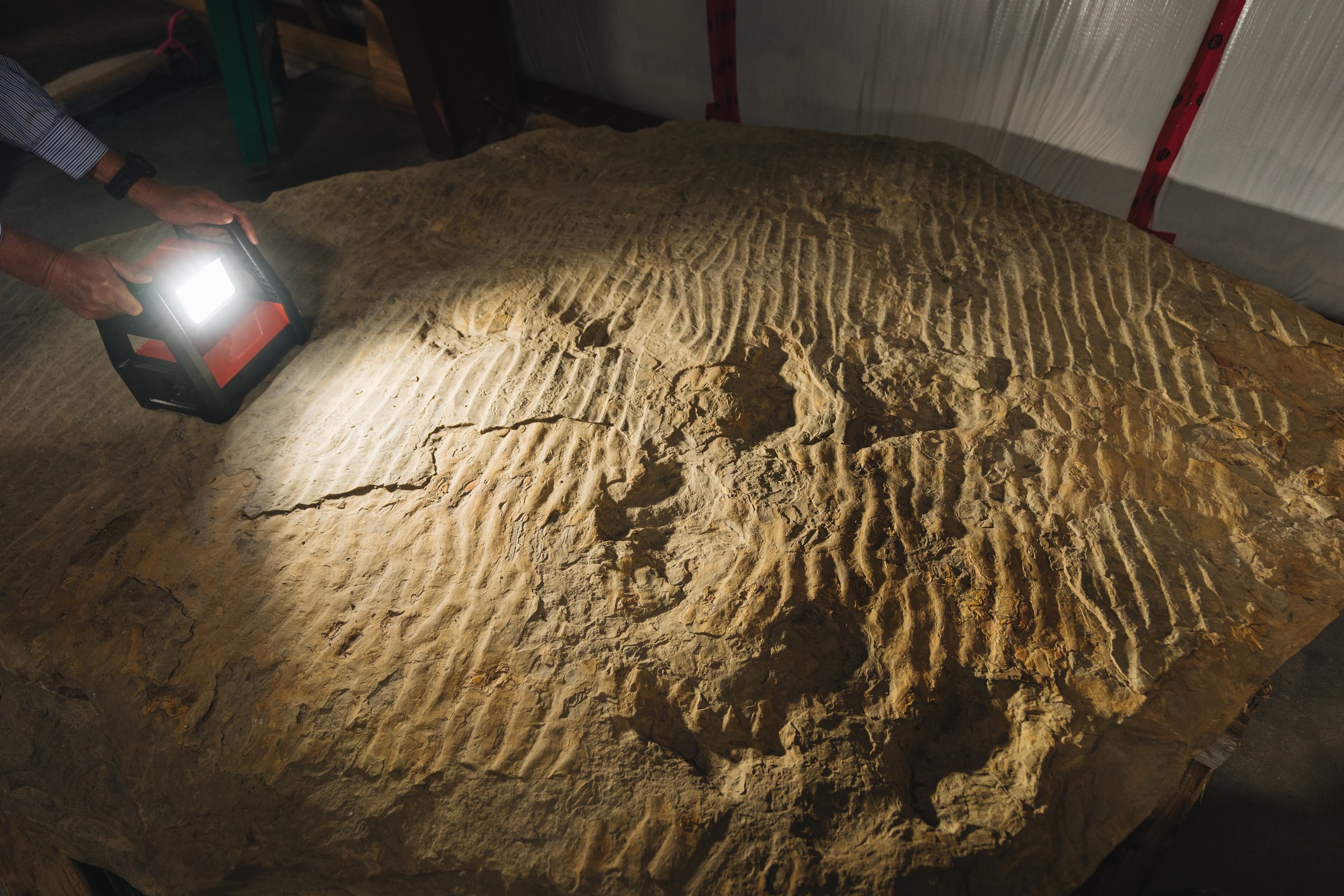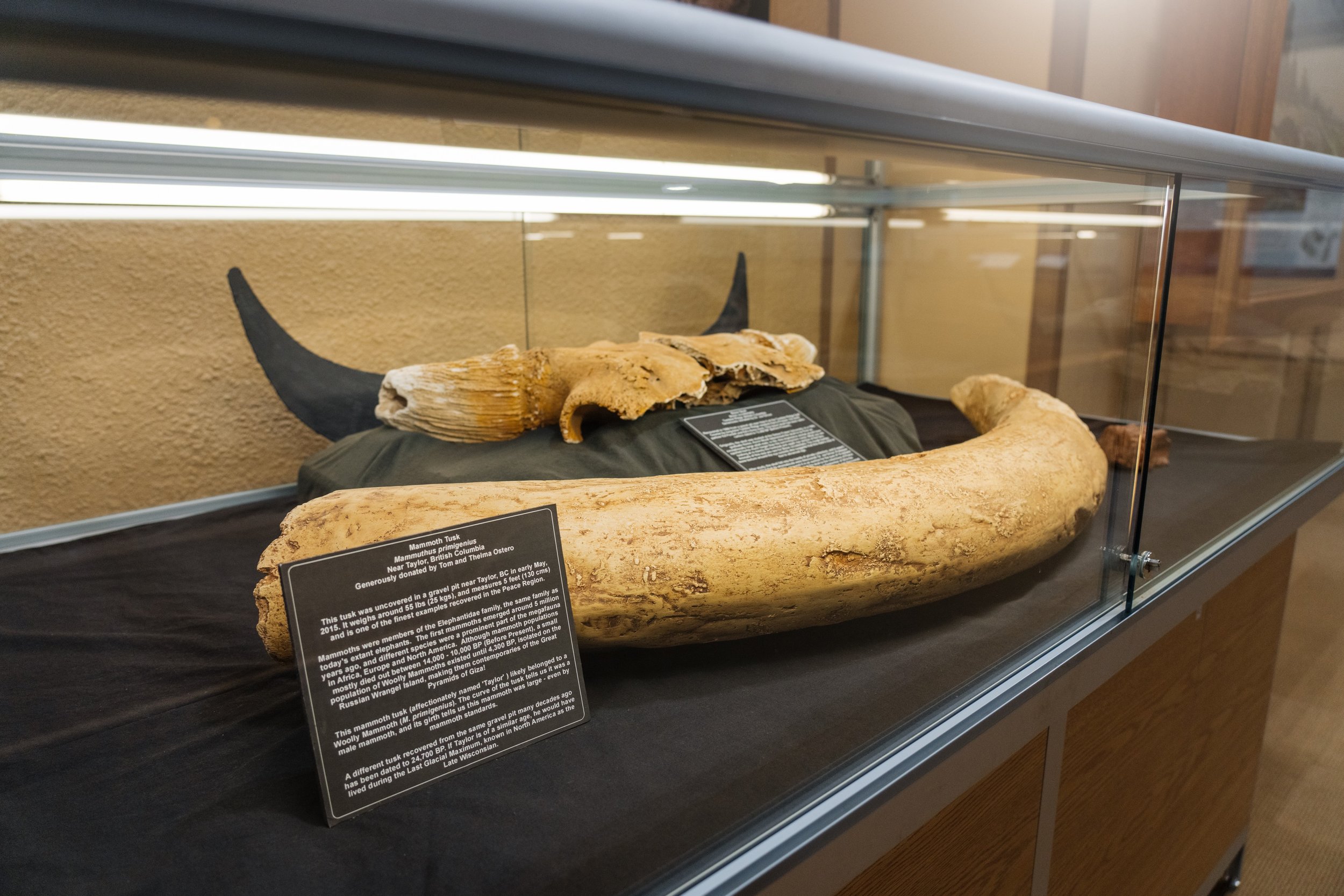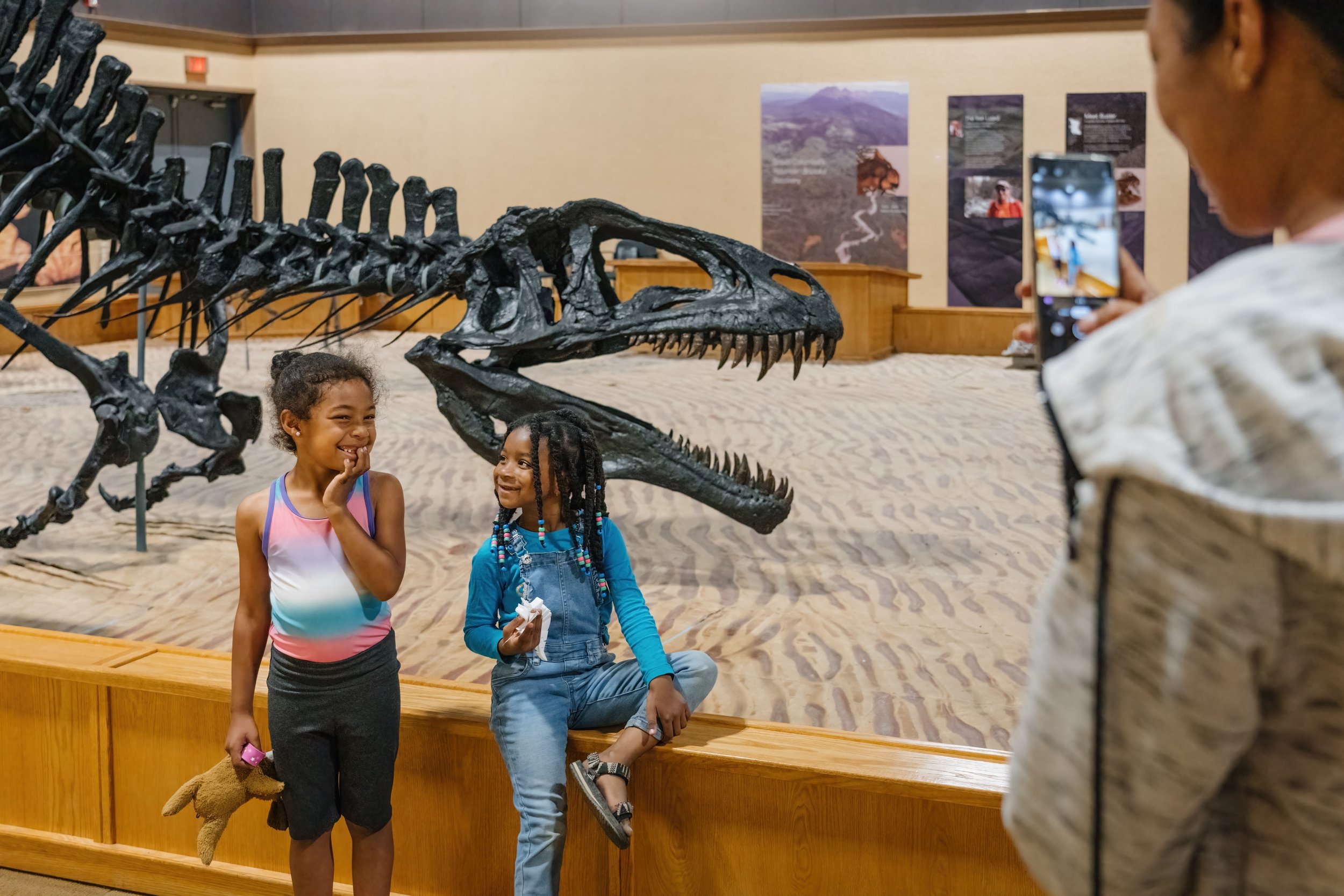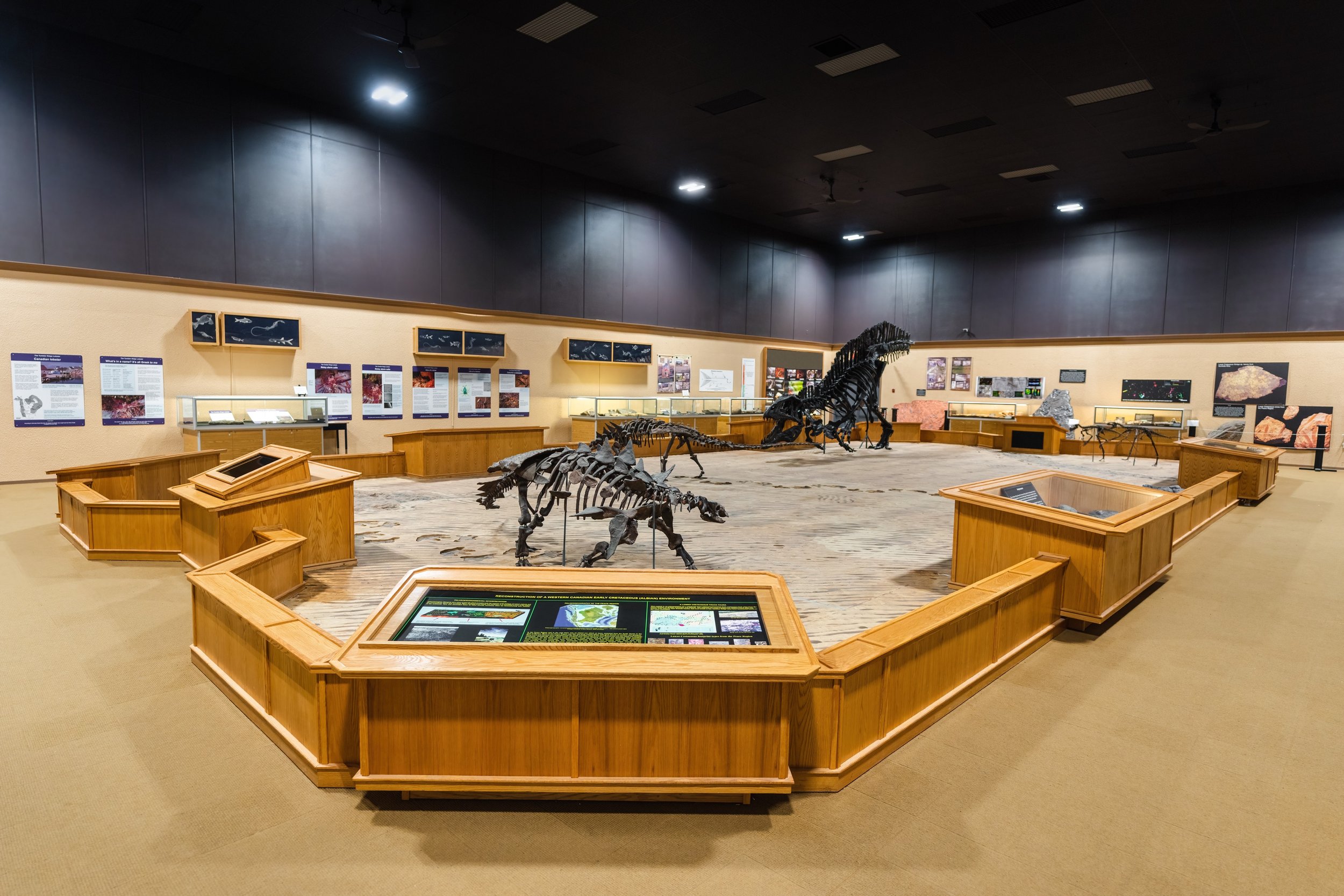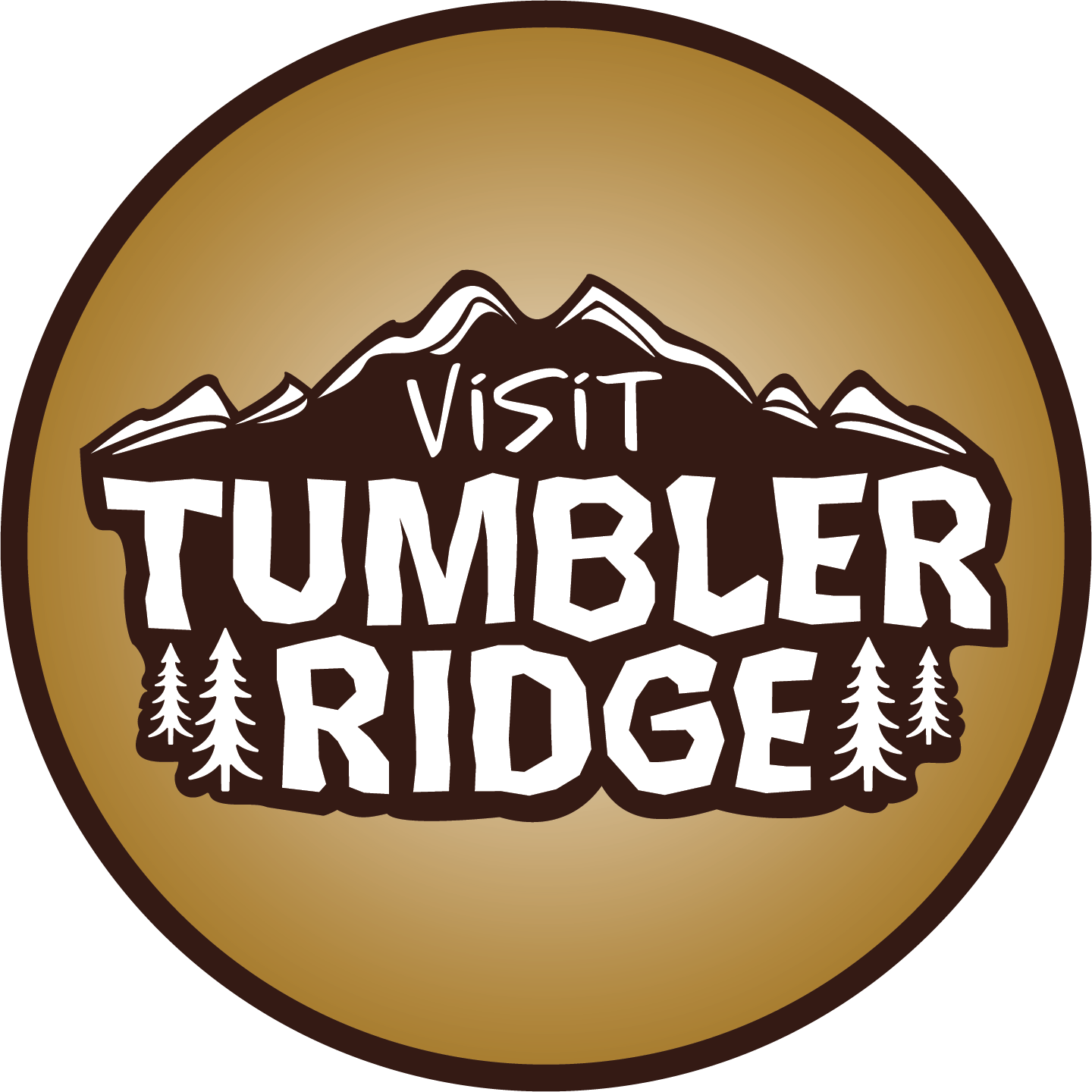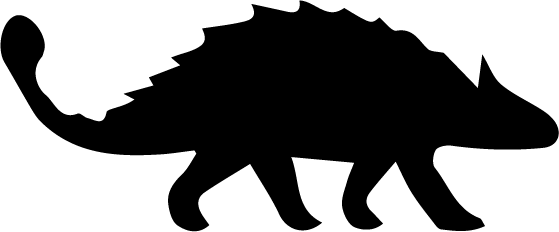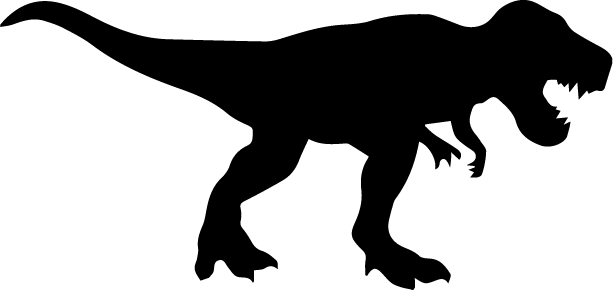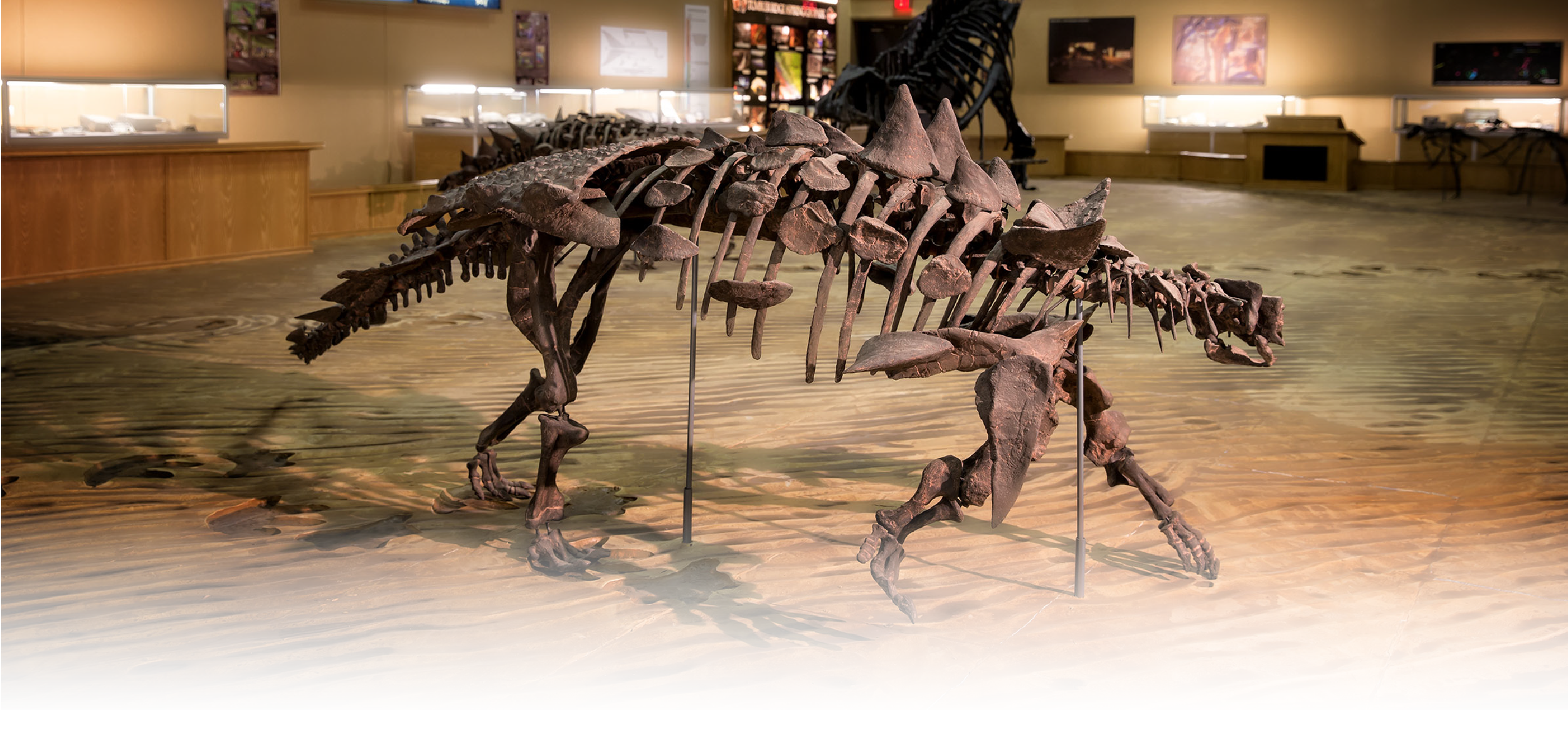
tumbler ridge museum
Discover the prehistoric wonders of Tumbler Ridge at the Tumbler Ridge Museum, a must-visit destination for any fossil enthusiast. Immerse yourself in over 300 million years of history as you explore the only facility of its kind in British Columbia. The wheelchair-accessible gallery showcases unique fossil specimens, including Tumbler Ridge's very own, that cannot be found anywhere else.
With informative presentations and displays featuring early marine life, dinosaur footprints and bones, a full-scale paleontological exhibit, and Ice Age discoveries from the Peace Region, visitors can explore the natural history of this region like never before.
Make sure to also explore the museum's Human History exhibition, located in the Community Centre. Plan your visit now and get ready to embark on an unforgettable journey through time!
Peace Region Paleontology Research Centre
Trackway Tours and
Education Programs
Tumbler Ridge
Historical Archives
How it began
It all started in 2000 when two boys were enjoying a sunny day, floating down the Flatbed Creek rapids south of Tumbler Ridge when they stumbled upon what looked like four-toed footprints in the bedrock. Little did they know that their discovery would spark a chain of events that would lead to one of the most significant dinosaur discoveries in the world.
After contacting Canada's leading expert on dinosaur tracks, Rich McCrea, he confirmed that the prints were ankylosaur tracks. McCrea later discovered BC's first dinosaur bone right beside the trackway. Since then, thousands of footprints have been discovered, including the only known tyrannosaur trackways in the world.
Further excavations in 2002 and 2004 revealed bone beds with several hundred bones, making it the largest collection in BC and some of the oldest bones in Western Canada. The area now boasts the excavation of British Columbia's first articulated dinosaur.
tumbler ridge museum foundation (trmf)
The TRMF collects, researches, archives, and displays over 300 million years of Peace Region history. It is home to an extensive collection of British Columbia’s palaeontological resources from early examples of marine life, to dinosaurs, and the Ice Age.
New discoveries and research
New discoveries are being made all the time in the Geopark! From hand-sized samples to one-tonne blocks, most are found by volunteers and visitors. We rely on the public and our community partners to help us find, document, preserve and/or retrieve these discoveries so we can continue our research.
If you discover what you think may be a dinosaur footprint or bone, take these steps:
• Take three or four photos from different angles, use an easily identifiable object like a coin or pen, for scale.
• If possible, record the GPS coordinates. Or make detailed notes of where it’s located so our team can find it.
• Please do not remove it. The surrounding area is as important to the research as the discovery itself.
• Report the discovery to the Museum by phone (250) 242-3466 or email.
Ankylosaurs – These armoured herbivores walked on all fours, sometimes had a massive tail club and grew to 10 m (33 ft) in length. Their hind feet had four toes, and the front footprint resembles a crescent moon, with five toes.
Ornithopods – The prints of these herbivores are wider than they are long, with three fairly blunt toes and tiny handprints. They had a stiff tail to help them balance as they ran on their hind legs.
Theropods – These bipedal carnivores were fast and agile. Their trackways are narrow and show three-toed prints that are often longer than they are wide.
The Tumbler Ridge dinosaur footprints fall into three groups:
